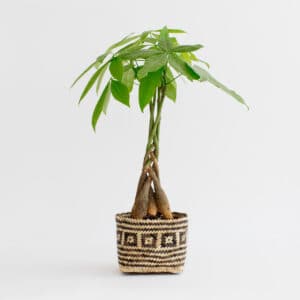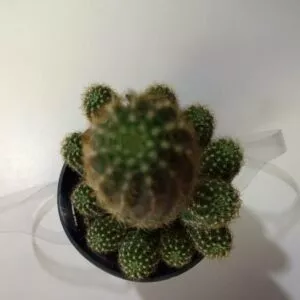No products in the cart.
Table of Contents
The shampoo plant will brighten your garden or home with red pinecone ginger lily. So, brace yourself for a care journey looking after your tropical plant indoors or outside.
More About the Shampoo Ginger Lily
If you have never heard of the Shampoo Ginger Lily, we welcome you here to learn more about this species. The Zingiber zerumbet plant has different names: Shampoo Lily, Awapuhi Kuahiwi, Bitter Ginger, and pinecone ginger. Yet, the most common name, shampoo ginger, is known by many who buy the plant.
The plant is native to tropical Asia, mainly India, but found its way to Hawaii with the Polynesian settlers. The flower head produces ginger-scented fluid that many still use in shampoo or, hair conditioner, and essential oils. At the same time, roots have medicinal properties and are dried to use as a fragrant powder.
You can use the rhizomes as a replacement for ginger, but it tastes bitter. In Java, the people took the leaves to wrap them around meat as added flavor. Hence, you can grow the plant indoors while using the benefits.
Shampoo Ginger plants belong to the Zingiberaceae family, including Ginger and Turmeric. The wild ginger grows up to six feet tall in tropical regions. During the growing season, spring to summer, bright red flowers emerge, standing up to four inches tall with a ginger-like scent.
The reason for the name pinecone ginger is the shape of the flower head. The inflorescences start green with a waxy wrap in bright green bracts, eventually producing white flowers as they mature. The shampoo and conditioners are made from the creamy liquid found in the exotic plants’ flowers.
The Shampoo Ginger Lily grows green foliage, but variegated species are also available, producing white and green variegated leaves.
Zingiber Zerumbet Plant Care Tips

The wild Ginger grows best in the USDA hardiness zones nine through eleven. Still, the Ginger family is suitable to grow in zones eight through twelve. A Shampoo plant can take up to ten months to mature and harvest, but the rhizome extracts you can take when the bitter ginger plants are five months old. When planted outdoors, it helps to space them 36 inches apart.
Rich Soil For Shampoo Ginger Plants
The bitter ginger plant prefers dense, nutrient-rich soil that is also slightly acidic with a neutral pH.
When growing your Pinecone Ginger plant indoors, you can use a potting soil mix with perlite, vermiculite, and orchid bark to allow excess water to drain.
Also, provide your Shampoo Ginger Lily plant with a pot that has enough drainage holes to prevent waterlogging. Too much water can result in fungal infections and root rot.
Shampoo Ginger Plants Light Needs
The Pinecone Ginger also prefers to grow in partial shade to a shaded area than in full sun. As a result, your Shampoo plant needs about six hours of bright indirect sunlight to display the gorgeous bright red flower.
When grown indoors, it helps to find a spot at a south or west-facing window to receive more sun in the morning than the rest of the day. If you must place your Shampoo Ginger plant at an east-facing window, it also helps, while a north-facing window will provide the least bright light and might struggle to grow.
For growing your Shampoo plant outdoors, provide it with partial shade or dappled light to still receive direct sunlight for half of the day. Hence, the rule is full sun in the morning with shade in the afternoon.
Watering Shampoo Ginger Plant
If there is one thing the Shampoo Ginger Rhizomes loves, it is moist soil during the growing season, early spring to fall. It helps to keep the ground dry during the winter when these tropical plants go dormant.
We recommend the old finger test to check the soil moisture to see if the root system needs water. Another helpful tip is to water at the base of the plant and not the leaves, as it helps prevent fungal infections.
Another helpful tip is to use distilled water instead of tap water, which can result in salt buildup in the soil.
Temperature and Humidity
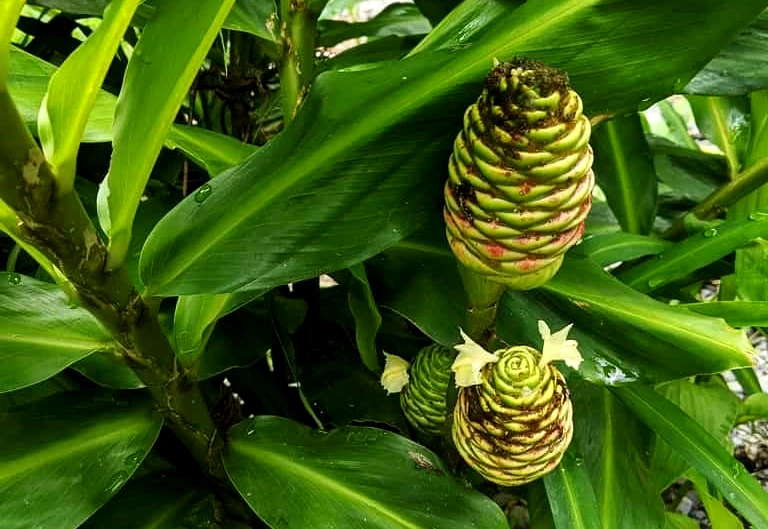
Just as important as it is to provide your tropical plant with a well-drained potting mix, it needs the correct temperature and humidity to flourish. You can grow these exotic plants outdoors in zones eight and higher.
The Shampoo Ginger Lily is cold tolerant, but growing indoors is also acceptable. Hence, it helps to maintain temperatures above 55°F but can take temperatures of 20-30°F. When you grow your edible plant outside zones eight to twelve, the best is to overwinter indoors.
For growing outdoors in zone 8, you can add some mulch in winter to protect the rhizomes from frost, as it might be hardy in winter but not that hardy. Or you can use a frost cloth. Alternatively, growing outside zones 8-12, you can dig up the rhizomes in the fall and store them until spring.
The fantastic plant needs a humidity level of 50%, and if you struggle to maintain humidity in the home, using a humidifier, pebble tray, or grouping plants helps.
Awapuhi Plant Fertilizing
The best time to fertilize your Shampoo Ginger plant is during the growing season. We recommend a phosphorus-rich fertilizer to help encourage growth for healthy blooms and rhizomes. But if you prefer a natural approach, it helps to use well-drained soil with well-rotted compost for your Awapuhi to develop multiple buds.
Pruning and Maintenance
Pruning a shampoo ginger lily (Zingiber zerumbet) can help maintain the plant’s appearance and health. The best time to prune your shampoo ginger lily is early spring or late winter before new growth begins.
This allows the plant to recover and produce fresh growth during the growing season. You’ll need a pair of clean, sharp pruning shears or scissors.
Steps to Prune:
Start by inspecting the plant for any dead or damaged leaves or stems. Carefully cut these back to the base of the plant. Removing dead or damaged growth will improve the overall appearance and health of the plant.
If your shampoo ginger lily has grown too tall or wide, you can trim it to the desired size. Cut back the stems to a healthy, outward-facing bud or leaf node. This encourages branching and fuller growth.
If your plant is very dense, consider thinning it out by removing some of the older stems or any overcrowded growth. This allows better air circulation and light penetration.
After the plant has finished flowering, prune away the spent flower stalks to tidy up the appearance and promote new growth.
Be selective in your pruning to avoid removing too much growth at once from your shampoo ginger plant. It’s usually best to trim conservatively and see how the plant responds before doing more.
Propagating the Shampoo Plant
Propagating the Bitter Ginger is done through seeds or rhizome division. Using the seed method does take longer to grow a new plant. We will describe both ways here for you to use.
Rhizome division
Put on a pair of gloves and use sterilized shears.
Next, digging up your plant using this method is best done when you want to replant it when grown indoors. Again, look for the roots like the Ginger you buy in the shop.
Cut off enough roots that have several buds present.
Leave the cuttings to be callous for a few days.
Then, before planting the roots, please leave them in warm water overnight.
Fill up your containers with equal parts soil, compost, and plant with the buds upwards.
Place your new plants in a warm spot with bright indirect light indoors. Water to keep the soil moist, and feed your plants with a fertilizer bi-weekly until it sprouts.
Growing Shampoo Ginger Plant From Seed
Using this method is rare but not impossible. If you can get your hands on some Pinecone Ginger seed, then follow these steps:
First, soak the seeds in water overnight, allowing them to swell.
Then, with a seedling tray, you can fill with a nutrient-dense seedling starter mix.
Place your seeds into the potting medium and space them two inches apart.
Place the tray in a humid and warm area, or cover it with plastic wrap on a heated seedling tray to help it germinate.
The seeds can take weeks to two months before you notice new growth.
Zingiber Zerumbet Varieties
Wild Gingers are great companion plants to grow with other plants, and you can find quite a few species around that have their beneficial properties.
Zingiber spectabile
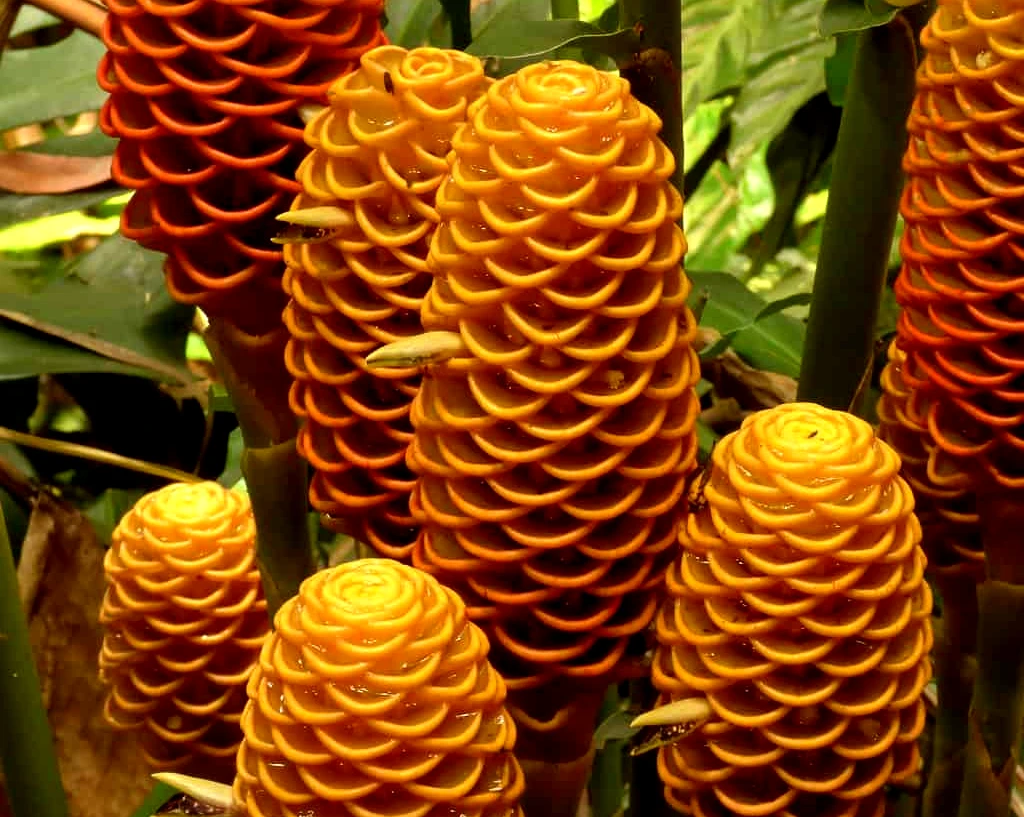
The Ginger Wort or Malaysian Ginger, also known as the Beehive Ginger, makes for an exceptional ornamental plant. It grows a yellow inflorescence that looks like a beehive, and when the plant matures, it turns to red pine cones. All parts of the plant have a ginger fragrance that you can use in food and appetizers.
Zingiber mioga
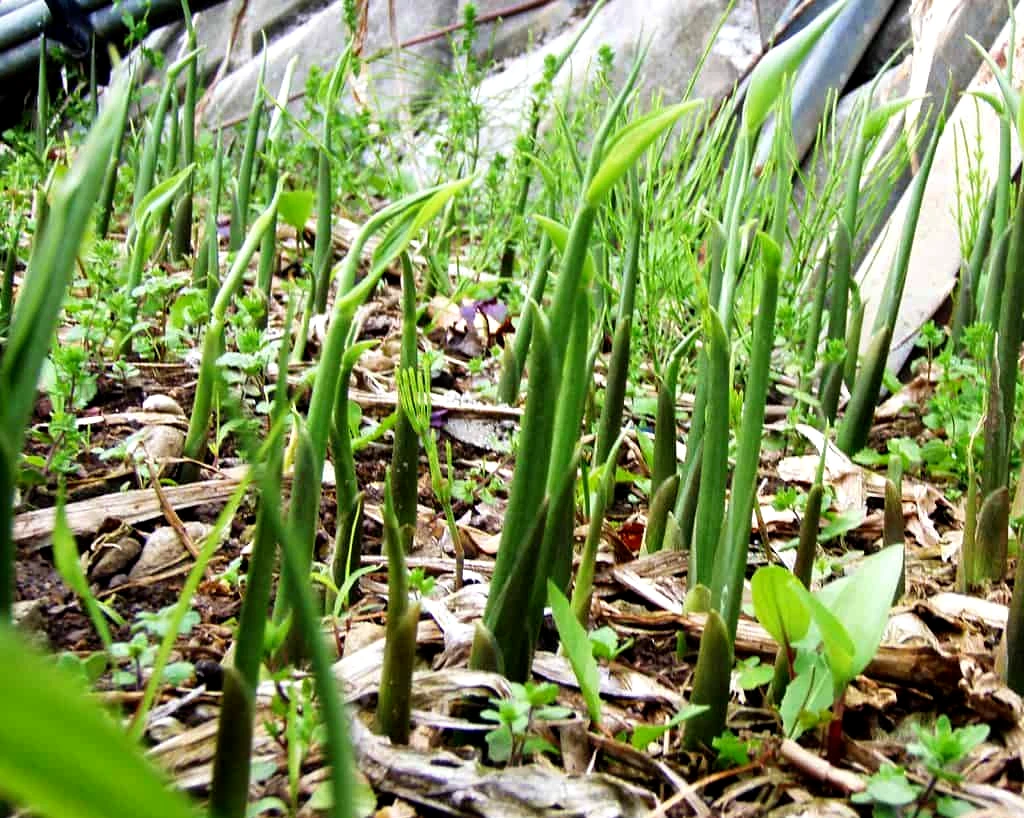
Myoga Ginger, also known as the Japanese Ginger flowers and shoots people use to make a tasty garnish for food. The plant has a zesty yet spicy flavor.
Zingiber officinale
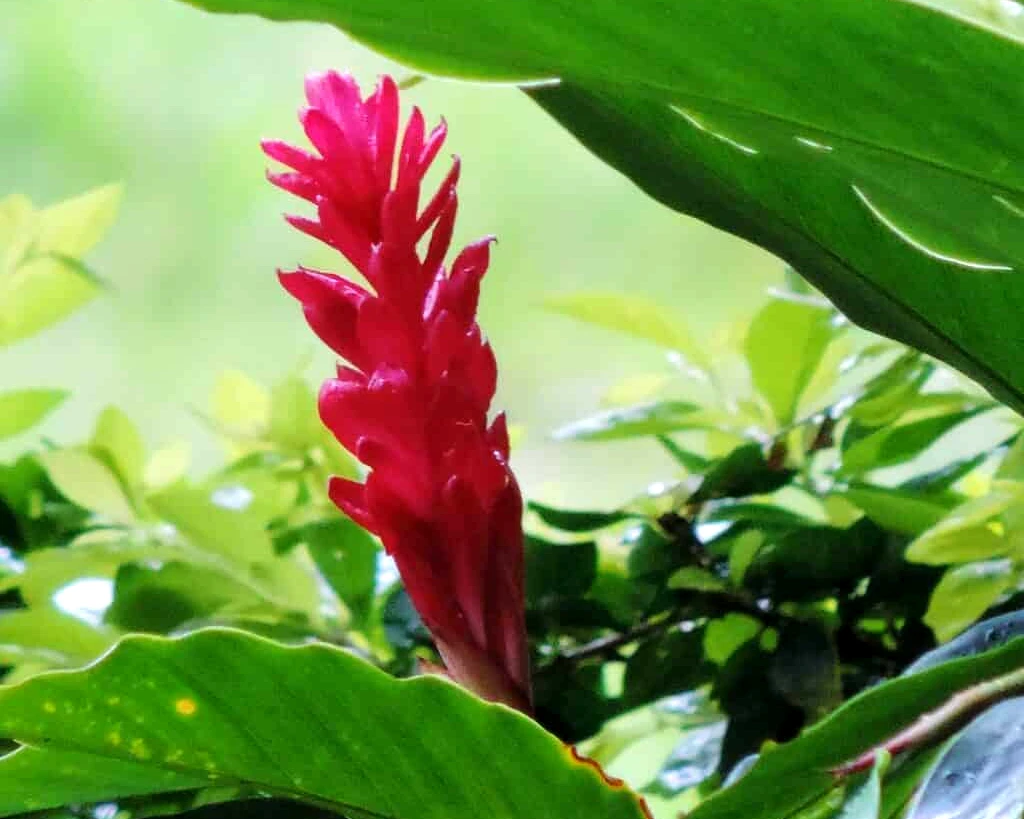
The common Ginger goes by different names: Adrak, Kion, Dulce, Ginger, Jengibre, and True Ginger. You find the Ginger sold in most shops with an aromatic to pungent root.
Shampoo Ginger Lily Diseases and Pests
The most common concern with your Shampoo Ginger Lily is fungal infection from root rot caused by overwatering. Still, they can also become bothered by pests like spider mites and mealybugs. Here are some concerns to keep an eye on:
Cardamom Root Grub is a pest that can damage your new plant’s roots. With severe infestations, the leaves and stems will turn yellow. You can use insecticidal soap to treat the problem.
Root rot and soft rot result from overwatering, and the leaves can turn yellow, resulting in stunted growth with a rotten brownish base. The best is to remove the plant to save any healthy roots and place it in a pot filled with fresh soil.
Mealybugs and spider mites suck out all the nutrients in your plant, and you can remove them with a spray of water and leave your plant to dry, followed by a neem oil spray.
Frequently Asked Questions
Shampoo ginger earned its name because the rhizomes contain a natural detergent-like substance. When crushed or rubbed in water, the rhizomes produce a soapy lather that can be used for washing hair and even clothing. This traditional use gives the plant its common name.
Shampoo ginger lily can be grown as a houseplant but requires a warm and humid environment. Provide bright, indirect sunlight, and keep the soil moist but not waterlogged. Regular misting can help maintain humidity around the plant.
While shampoo ginger lily is not typically grown for culinary purposes, some cultures use its rhizomes in traditional dishes. However, it’s not as commonly consumed as other ginger species, like Zingiber officinale.
Shampoo ginger lily has been used in traditional medicine in some cultures for its anti-inflammatory properties. However, it is not a widely recognized medicinal plant, and any use for medical purposes should be approached with caution and under the guidance of a healthcare professional.
Common pests that can affect shampoo ginger lily include aphids, mealybugs, and spider mites. To prevent these, ensure good plant hygiene and use organic pest control methods. The plant can also be susceptible to fungal diseases if overwatered or exposed to excessive moisture.
Shampoo ginger lily (Zingiber zerumbet) is related to culinary Ginger (Zingiber officinale) as they both belong to the ginger family (Zingiberaceae). However, they are distinct species with different uses and characteristics.
Look for the rare shampoo ginger lily at specialty nurseries or online exotic plant retailers. Inspect plants closely before buying. Though not widely available, this uniquely fragrant tropical flower is worth hunting down for your garden. Persistence pays off in procuring elusive specimens.
Whether you want to buy, sell, or simply reach out to other plant enthusiasts, Plantly is the right place to be!
-
$6.00Sold By: Smoot's Farm
In stock
Succulent Succulent Haworthia Herbacea 2″ Pot Live Plant
Only 5 available and it’s in 1 people’s basketRated 4.89 out of 5 based on 27 customer ratings00Sold By: Smoot's Farm -
$44.00Sold By: NEEPA HUT
In stock
6″ Braided Money Tree Plant + Planter Basket
Only 10 available and it’s in 3 people’s basketRated 4.99 out of 5 based on 221 customer ratings06Sold By: NEEPA HUT -
$11.99Sold By: Succulent Oasis
In stock
Cactus Plant Medium Chamaelobivia “Rose Quartz”
Rated 4.84 out of 5 based on 352 customer ratings02Sold By: Succulent Oasis -
$12.99Sold By: BubbleBlooms
In stock
Pilea peperomioides / Chinese money plant / Chinese missionary plant
Only 993 available and it’s in 4 people’s basketRated 4.81 out of 5 based on 279 customer ratings04Sold By: BubbleBlooms

